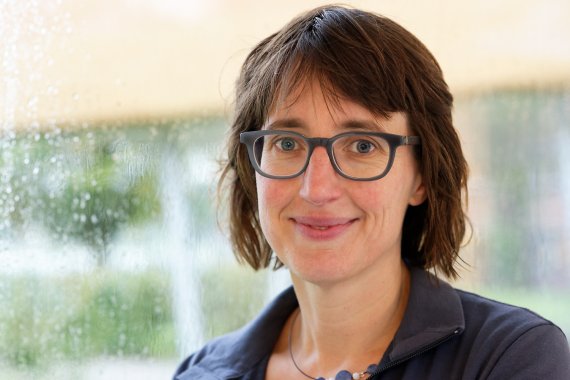Foto: Guy Ackermans
Root research does not have a very sexy image. Roots grow in the dark soil and they all seem to look alike. ‘As root ecologists we have a problem’, says Mommer. ‘Above the ground it is simple to determine the plants, but underground it is a different story. There it is a skein of roots.’
But Mommer found the solution. As postdoc in Nijmegen she developed a DNA analysis method to untangle the root spaghetti. With this new method in hand, she moved to Wageningen, where she had also completed her biology study. Mommer: ‘I wanted to apply the new method in at an impressive experiment that was going on in Wageningen at that moment. I was a biodiversity experiment with a hundred plots that had one to eight different species growing together in different compositions. The ultimate test for my method.’
In this experiment – and that of many others around the world – it was found that more diversity in species leads to higher productivity of the ecosystem. Apparently, different plant species can give each other a boost. ‘The theory about underground plant-plant interaction contains two assumptions’, Mommer explains. ‘Plants compete for water and nutrients, and species differ in their needs. As a result you would expect that vegetation with different types of plants make a more complete and efficient use of the soil. The work I had done with my Veni-grant has shown that there are indeed more roots in plots with more species, but the rooting pattern is not consistent.’
Last year the search for an answer was continued when Mommer received a Vidi-grant to research the underground interaction between plants and fungi in natural grasslands. ‘The accumulation of pathogenic fungi in species-poor vegetation could be an alternative explanation for the positive effect of biodiversity on productivity. In species-rich vegetation part of the pathogenic fungi is lost.’
The big question is, how is that possible? Mommer thinks that between all the roots, the fungi have difficulties finding their way to their favourite plant. ‘Lost in diversity’ is what she calls it. ‘There are so many signals, such as bacteria and metabolic products that are excreted by the roots, that the fungi can get lost. You can also see it the other way around: that the roots hide behind their neighbours for a ‘bad fungal guy’.
‘With molecular technology we can make a clear inventory of the micro-organisms in and around a plant root. Disentangling the complex world to get a functional understanding of biodiversity is the real challenge. I do this together with a team of diverse experts. On the Wageningen campus these are all within reach.’

